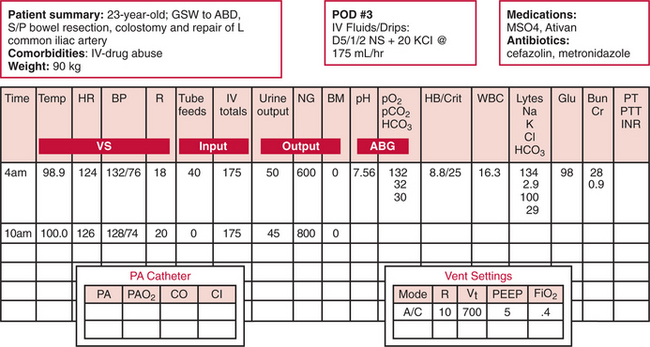Chapter 73 Introduction to Surgical Critical Care
The ICU is an intimidating place, especially for the uninitiated. Patients in the ICU have potentially life-threatening multisystem illnesses, and the most advanced technology is utilized for their treatment. Preparation for patient care in the ICU requires review of basic physiology and pathophysiology, familiarization with the equipment used and the information documentation practices, as well as development of a clear systems approach to problem solving. In the systems approach each patient’s disease is considered a summation of separate organ systems dysfunction. This helps simplify this complex environment, which at times can seem chaotic and overwhelming. The “art” that is practiced in the ICU involves integration of the effects of separate organ system dysfunction for the purpose of treating the patient as a whole with overall therapeutic effectiveness.
Every ICU uses a flow-sheet to document the physiologic changes that occur over time and in relationship to interventions. Every institution’s flow-sheet will appear slightly different. These flow-sheets are usually set up in a systems approach to organize the information. A key to early success in the ICU is knowing how to read and interpret the flow-sheet. Figure 73-1 has been created as an example of flow-sheet data. As an exercise, we have provided a basic recitation of the data by a novice medical student, comparing it to a resident physician’s more sophisticated interpretation. The latter is the model to which you should aspire. You are invited to use these examples to learn how to read, interpret, and synthesize the important information on this ICU documentation tool.
Stay updated, free articles. Join our Telegram channel

Full access? Get Clinical Tree



